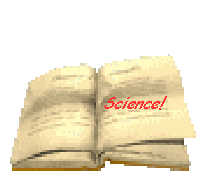|
Science Fair Project The Research Paper
|

Look into Books, Reference Materials, Periodicals, and the Internet. Clipart by Animation Factory
|
 Look into Books, Reference Materials, Periodicals, and the Internet. Clipart by Animation Factory |
|
Science Fair Project The Research Paper Research?! USE: * Scientific American * American Scientist * High school textbooks * Appropriate Web resources * Research should be cited using MLA format as appropriate Students are expected to have a thorough understanding of the work that they have done. The student must know why the experiments they have assembled and operated can provide the answers they seek. Ok, how? Easy: 1,2,3! 1. Read & take notes! . Read GSDSEF step by step on research, pages 7-10! · Start your log book (The diary of your project! Your records!) · Go to library. Read, read, read about your topic! · Check out 1) books, 2) periodicals (science magazines and journals, newspapers), 3) reference materials (encyclopedias, dictionary), and 4) the Internet! · Read GSDSEF Step-by-step Guide, page 8, regarding internet source quality and research! · Use Guide to Note taking: http://webster.commnet.edu/mla/index.shtml · Record all Bibliographical information (check Paluso web page for link to MLA format and handout. Be careful to get all information, it’s hard to go back later to get more.) Print any Internet sites you use and KEEP! (This is not your internet research…you must read and take notes on internet material as you do books, etc.) · Re-read Mrs. Paluso’s web site and review the structure of the research paper and science fair project, especially the format, BEFORE you write the paper and report.Tip: Don't deviate or you’ll lose points. · Share this information with your parents so they know what you’re doing and why. Email (even in summer) or call Mrs. Paluso for clarification! 2. After researching, WRITE! · Use http://webster.commnet.edu/mla/index.shtml as your guide to writing! · Type your paper (4-5 pages) in a simple 12-point font. Save in TWO (2) locations; that is, your computer hard drive and a floppy disk or CD. Think about protecting this work! Save often as you write. · Think about “Ready! Fire! Aim!” Put things in order.Tip: Outline the paper first—before you write your first draft. · Get "you" out of your paper. Research and formal papers should be in third person only. Use they, he, she, or it. · Include citations every time you present a large idea or a fact that is not yours. Give credit to the author. Put their name and a page number in parenthesis immediately after the idea or fact. Indent anything that is more than two lines long. NEVER PLAGIARIZE. Use your own words! Refer to http://mail.nvnet.org/~cooper_j/plagiarism/ · Read “How to Use Sources and Avoid Plagiarism”, attached. · Use quotes, if citing the author exactly. Tip: Quotes can only be USED very infrequently! · Make sure the information you present is consistent. It is your job to make sense of the information not the reader’s. If your research or experiment shows conflicting numbers then explain it. · Put yourself in your reader’s place. Does the information make sense? Is the information clear? · Write your Bibliography using MLA format. See the link. 3. Edit! · Proof read your paper. · Review the structure and format again. Use it as a checklist to make sure you completed all requirements. Tip: If all requirements are not met, you’ll lose points. · Have someone else edit! Then edit again! Tip: Read it out loud! · Use the exact format of citations and bibliography. Tip: If all requirements are not met, you’ll lose points. · Use spell check and grammar check on the computer wisely. Tip: You should make the final decision on spelling and grammar, not the computer. Tip: Check the punctuation. · Turn in 2 copies: one to Mrs. Paluso and one to Mrs. Evasick as 'DRAFT's. Tip: Mrs. Evasick and Mrs. Paluso will write what the problems are on the paper, not correct them for you. For example, if we see an incorrect bibliography format--we'll circle it and write, "Format." You should then check the format and correct it. We will correct minor grammatical and spelling problems and make notes telling you to check bigger problems. For example, we will not rewrite a sentence fragment or fix inconsistent information. We will write “Fragment” or circle the inconsistent information. · Correct all errors. It is your job to correct it! Tip: Never turn in anything with ink marks from editing! · Turn in to Mrs. Paluso again & AGAIN! Tip: Repeat last two steps as often as needed. It is a DRAFT and can be turned into Paluso until it is perfect or the FINAL DRAFT is due (which ever comes first!). Your grade will continue to improve each time! You are now ready for the fun of experimenting! · Read Mrs. Paluso Web pages for instruction. · You will need to write a HYPOTHESIS and then · You will need to write the PROCEDURES · PROCEDURES MUST RECEIVE MRS. PALUSO’S APPROVAL BEFORE YOU PROCEED, even during the summer. Email Paluso (ppaluso@harborside-school.com) . · GSDSEF FORMS MUST BE FILLED OUT PRIOR TO EXPERIMENTING OR YOU WILL HAVE TO BEGIN AGAIN!!! See Paluso web page for link. |
Links:
|